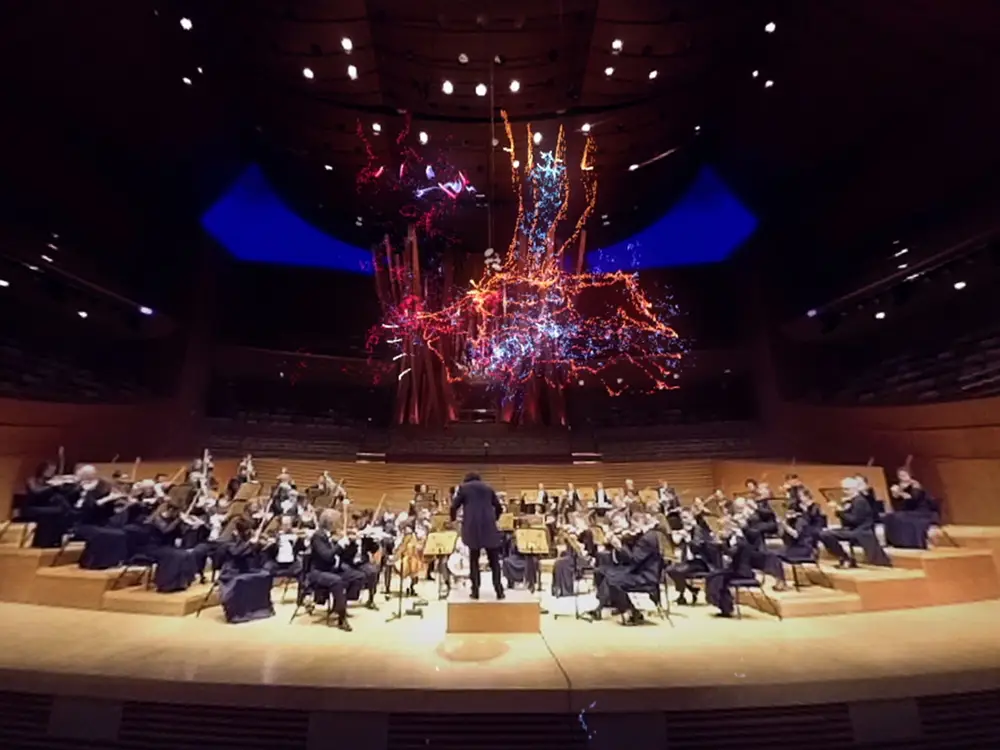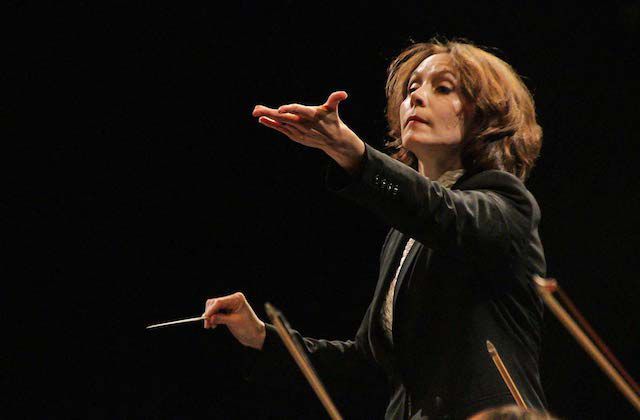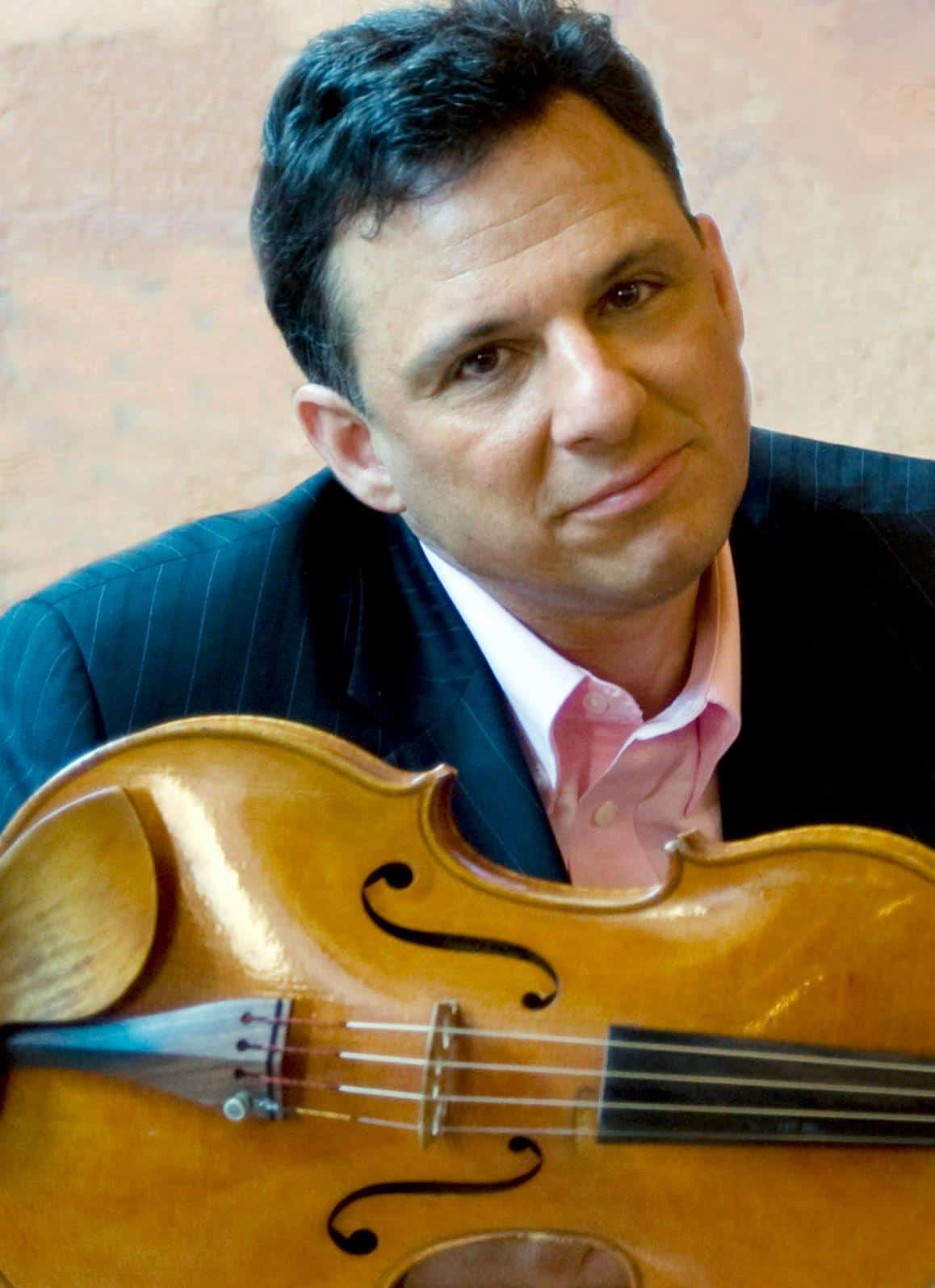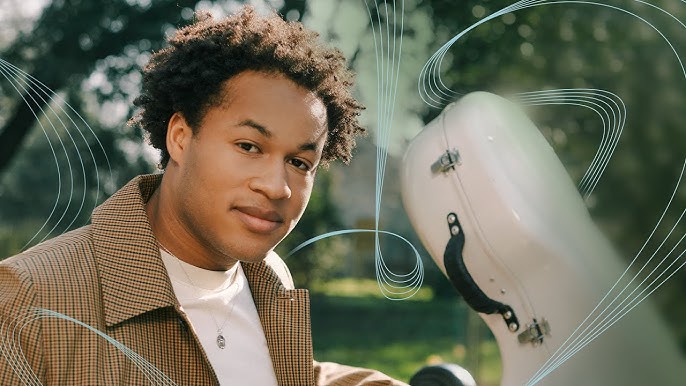Is VR the future of live concerts?
OrchestrasFurther to the furious reception of visual intrusions at the City of Birmingham Symphony Orchestra’s ‘concept’ concerts, the Mahler Chamber Orchestra is offering full-on audience interaction with its musicians.
Read this:
This January, Princeton University Concerts will deliver an entirely new experience to audiences: the North American premiere of Future Presence, a concert experience in virtual reality, developed by and featuring musicians from the Mahler Chamber Orchestra. Unlike other VR musical applications that can be experienced at home, Future Presence focuses on an ever-changing 3D sound that changes as the participant moves around the virtual space. This interactive aural landscape, captured in high dimension audio, takes precedence within the virtual landscape.
This experiential installation will run January 18-21, 2024, 10AM-8PM on the Princeton University campus. With the aid of VR (Virtual Reality) headsets, audiences will be able to move around (or through/over/under!) the musicians of the Mahler Chamber Orchestra as a 3D Sound recording of W.A. Mozart’s Allegro from String Quintet in G Minor, K. 516, Charles Ives’ The Unanswered Question, and Felix Mendelssohn’s A Midsummer Night’s Dream, Op. 61 responds in real-time.
The virtual reality environment will create the illusion that listeners are alone with the musicians, allowing for a remarkably personalized experience of the performance. In contrast to usual concerts and recordings, in which a fixed seating location or an engineer determines the acoustics, Future Presence gives the listener complete freedom to explore the virtual performance space, experiencing how the sound changes as they move through the virtual space. The installation, as the developers describe it, “addresses themes of voice, structure, space, collaboration, listening, and fantasy — central themes of music itself” and “transforms the listener’s encounter, undermining prevailing notions of acoustical ‘sweet spots’ and enabling a new and fluid aural experience that mirrors the dynamic interactions inherent in music and between the musicians.”
“This installation is presented as part of our popular Performances Up Close series,” explains PUC Director Marna Seltzer, “in which the audience sits on stage alongside the musicians. With Future Presence, they will be up closer than ever before, customizing their experience of the music by interacting with the technology. You can dance, lay down, sit at the feet of the violinist, walk towards the sound of the horns in the distance…all in the privacy of your VR headset. The technology allows you to experience the music from within the chamber orchestra, feeling how it’s made and heard by the musicians. It is so exciting to explore the intersection of music performance and technology on this robust scale.”
In addition to presenting the North American premiere of this installation, Princeton University Concerts is also collaborating with Princeton University Professor Edgar Choueiri, Director of the 3D Audio and Applied Acoustics (3D3A) Lab, to further advance the project.






This may not become a frequent “experience,” but giving people a four-day demonstration of simulated concert hall acoustics like this one at Princeton University is a fantastic opportunity to hear the subtle but real nuances of a concert space — if the engineers have created a realistic enough simulation.
At an orchestra rehearsal I attended many years ago, I had the opportunity to move about the hall and compare the quality of sound from different vantages. I recall quite vividly the differences I heard standing under the edge of the balcony on the orchestra level — stepping back a couple of feet under the balcony, then stepping forward into the hall, back again, then forward — and hearing how the sound opened up more fully in the open hall than in the shadow of the balcony. You don’t get that kind of stark comparison from sitting in one place.
This is clearly something that’s tailored to people who are a little obsessive about the quality of their listening experience — and more like a once-in-a-lifetime experiment than a regular occurrence.
Remember John Waters’s Polyester with “Odorama”, where moviegoers could smell what they were viewing on-screen with scratch-and-sniff cards?
I want that in my next Mahler concert.
I don’t know what Resurrection smells like, but I sure would like to find out.
Salonen and the San Francisco Symphony are doing Scriabin’s Prometheus with an in-house Cartier perfumer to spritz smells around the hall. Will it be as much of a failure as some of these years’ “innovations”? Maybe. Is it intriguing? Yes.
How about smelling Mahler’s favourite eau de cologne?
Sounds very interesting. I’d love to be able to move virtually around and through an orchestra as it plays.
What’s interesting about these new experiments, and the one thing they seem to have in common, is how they all find, albeit in different ways, avenues to detract audiences from what their focus should be on — in other words, the work being performed — while at the same time, and rather paradoxically, expecting these models to build new audiences. Whether an “immersive,” multimedia experience or this new VR experiment which would enable people to allegedly experience the piece from a variety of perspectives, the one thing which these new venues do have in common is a shift of focus from the work itself to one of its merely ancillary aspects — presumably because without such distractions, audiences would simply become bored, as the sole focus on the piece, which should be the whole point of the venue, has just become too much to bear and too much to expect from audiences. This is a very sad statement about the state of cultural life today. Undoubtedly, this new obsession regarding the interaction between music and technology is mostly motivated by financial considerations, as young people may be presumably more interested in anything involving technology, but I highly doubt it will be successful in reaching its goals. What would be the point of experiencing a section violin’s perspective of a Beethoven symphony, when one cannot even develop an appreciation for the work to begin with?
This initiative is the opposite of what CBSO are doing; Princeton are extending individual choice rather than imposing a concept on everyone.
This is very dependent on the audio quality of the headsets. Any audiophile will spot the difference between $100 and $3000 headsets in a second. So as spatiality and presence are an asset here, most creatively it seems, you still need warmth, bloom and reserves of power in the general sound to really get the experience overall.
But it is not compulsory to go?
No.
Guess who I bumped into at last night’s VR concert? You wouldn’t believe it!
This is man is experiencing a VR concert.
Enjoy. 😉
https://youtube.com/shorts/2accbLlJH4s?si=zS5WkxDt456yiFId
See ‘Betteridge’s Law of Headlines’
The problem with these kind of ideas is that it is not understood that classical music is already a complete virtual world in its own.
The music takes the listener along a journey through an imaginary landscape where all visuals and wrapping paper and text has been deleted and only the core: the direct emotional experience, is left. It is representing pure life experience without the concrete occurances, without the rational, conscious mind coming in-between. This is why in former times music was called ‘the language of the soul’. In music, the listeners get into touch with a layer in themselves they otherwise may find difficult to define or know about. It is the deeper layer of the psyche which is perceptive to order, meaning, adventure, tensions, etc. etc. – in short: all the colours of the human condition, but in pure sublimated form, like the perfume for which thousands of flowers have to be pressed to release their essence. Also it has the capacity of ordering otherwise confused feelings into some form of meaningful harmony, which can have a consoling effect, because the music can speak of negative experiences and at the same time give them a positive meaning. (Example: 1st mvt of Mahler IX)
Our technological age is the fruit of a couple of hundreds of years of a particular Western mindset in the making, which removed that inner layer more & more from reality, while thinking it is creating more & more objective reality. But in fact, it is unmooring the subjective ‘self’ from the world. Hence the widespread nihilism and depressive disorders (including addictions and neuroses) in the rich, well-orderd, efficient West.
The branch of philosophy called phenomenology has tried to explore this direct experience without interferring of the conscious mind, and sometimes – it seems – with success: Husserl, Merleau-Ponty, Heidegger. Classical music at its best returns to the experience of pure being, to direct experience of what it means to be alive. VR in classical music concerts merely demonstrates the abyssmal dept of interior emptiness of so many people living the modern life.